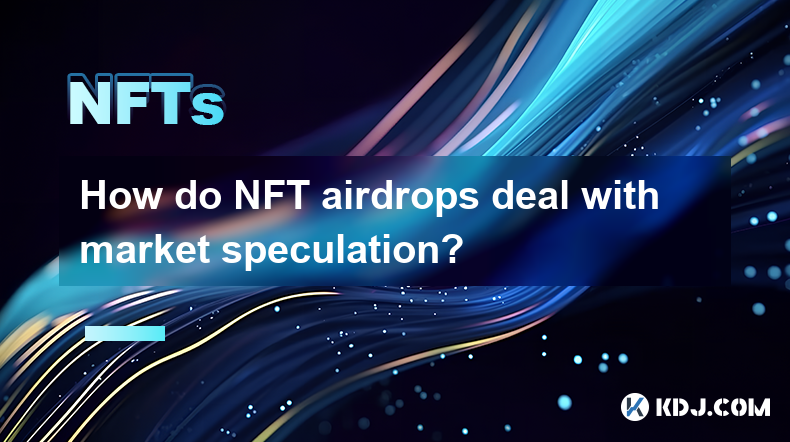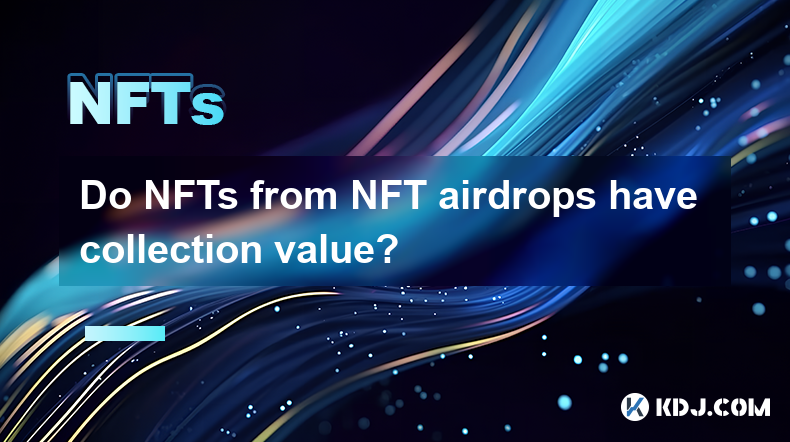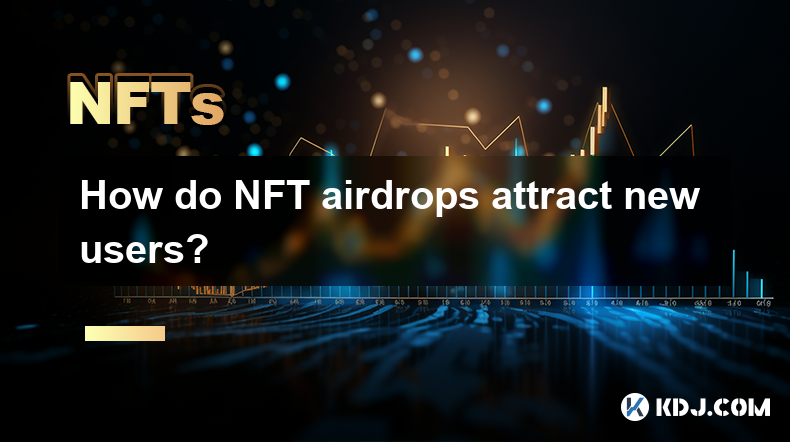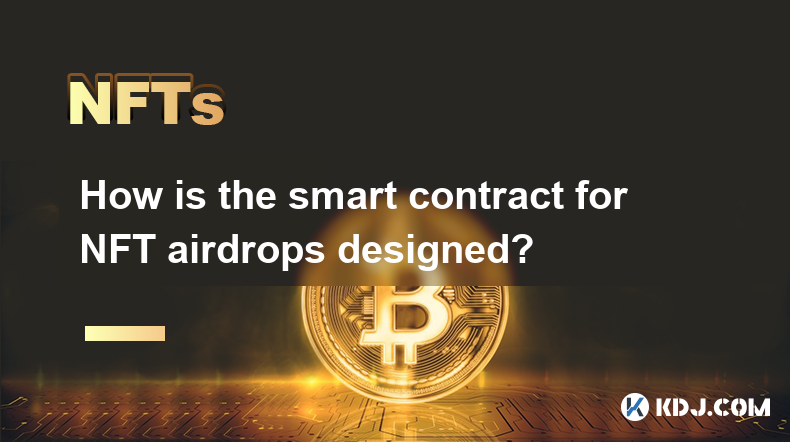-
 Bitcoin
Bitcoin $88,575.4133
1.33% -
 Ethereum
Ethereum $1,623.1195
-0.94% -
 Tether USDt
Tether USDt $1.0000
0.01% -
 XRP
XRP $2.1040
-0.96% -
 BNB
BNB $605.9509
0.36% -
 Solana
Solana $139.9862
-0.01% -
 USDC
USDC $1.0000
0.00% -
 Dogecoin
Dogecoin $0.1637
1.09% -
 TRON
TRON $0.2482
1.98% -
 Cardano
Cardano $0.6392
-1.18% -
 Chainlink
Chainlink $13.3059
-1.43% -
 UNUS SED LEO
UNUS SED LEO $9.0739
-4.00% -
 Avalanche
Avalanche $20.1274
-2.31% -
 Stellar
Stellar $0.2484
-4.08% -
 Sui
Sui $2.3116
2.05% -
 Shiba Inu
Shiba Inu $0.0...01252
-0.73% -
 Toncoin
Toncoin $2.9119
-3.20% -
 Hedera
Hedera $0.1725
0.04% -
 Bitcoin Cash
Bitcoin Cash $346.0750
1.19% -
 Hyperliquid
Hyperliquid $18.2428
0.88% -
 Litecoin
Litecoin $79.3117
-2.01% -
 Polkadot
Polkadot $3.7471
-4.36% -
 Dai
Dai $1.0000
0.00% -
 Bitget Token
Bitget Token $4.4341
-0.56% -
 Ethena USDe
Ethena USDe $0.9992
0.00% -
 Pi
Pi $0.6353
0.33% -
 Monero
Monero $216.8188
0.48% -
 Pepe
Pepe $0.0...08105
3.48% -
 Uniswap
Uniswap $5.3764
-1.05% -
 OKB
OKB $51.0901
0.18%
How is the scarcity and uniqueness of NFT achieved?
NFTs achieve scarcity and uniqueness through blockchain's immutable ledger, smart contracts controlling minting, and metadata defining individual attributes; cryptographic security ensures authenticity, while limited editions enhance perceived rarity.
Feb 28, 2025 at 08:55 am

How is the Scarcity and Uniqueness of NFTs Achieved?
Key Points:
- Blockchain Technology's Role: NFTs leverage blockchain's immutable ledger to record ownership and prevent duplication. This inherent characteristic of blockchain is the foundation upon which scarcity and uniqueness are built. We will explore the technical specifics of how this works in detail.
- Smart Contracts and Minting: The process of creating an NFT (minting) is governed by smart contracts, which define the characteristics of the NFT, including its supply, attributes, and any associated metadata. We'll delve into the intricacies of smart contract functionality in relation to NFT scarcity.
- Metadata and On-Chain vs. Off-Chain Data: The uniqueness of an NFT often extends beyond its mere existence on the blockchain. Metadata, which describes the NFT's properties and attributes, plays a crucial role in defining its individuality. We'll differentiate between on-chain and off-chain metadata and their implications for scarcity and uniqueness.
- Proof-of-Authenticity and Verification: Blockchain's cryptographic security provides a robust proof of authenticity for NFTs. We'll explain how this verification process ensures that an NFT is genuinely unique and hasn't been forged or duplicated.
- Limited Editions and Controlled Supply: Creators can intentionally limit the number of NFTs minted, creating artificial scarcity and increasing their value. We will analyze different approaches to controlling supply and their impact on an NFT's perceived rarity.
- Step 1: The Foundation - Blockchain Technology and Immutability
The fundamental mechanism underpinning the scarcity and uniqueness of NFTs lies in the nature of blockchain technology itself. Blockchain is a distributed, immutable ledger that records transactions across a network of computers. This means that once a transaction—in this case, the creation and transfer of an NFT—is recorded on the blockchain, it cannot be altered or deleted. This immutability is crucial because it prevents the creation of duplicate NFTs. Each NFT is represented by a unique cryptographic token on the blockchain, acting as its digital fingerprint. This token is tied to specific metadata that describes the NFT, ensuring its identity is distinct from all others. The decentralized nature of the blockchain further enhances security, as it's incredibly difficult for a single entity to manipulate the record of NFT ownership. The distributed consensus mechanisms employed by various blockchains (e.g., Proof-of-Work, Proof-of-Stake) ensure the integrity of the data, making fraudulent duplication virtually impossible. Furthermore, the transparency of the blockchain allows anyone to verify the authenticity and ownership history of an NFT by simply accessing its record on the blockchain explorer. This transparency is key to building trust and confidence in the NFT market. The underlying cryptographic algorithms used to secure the blockchain also contribute to the NFT's uniqueness, ensuring its digital signature is unique and verifiable. Without this foundational technology, the concept of scarcity and uniqueness in the digital realm would be significantly weakened, potentially rendering NFTs easily replicable and worthless. The security and transparency provided by the blockchain are paramount to the entire NFT ecosystem.
- Step 2: Smart Contracts: The Blueprint for Scarcity
Smart contracts are self-executing contracts with the terms of the agreement between buyer and seller being directly written into lines of code. In the context of NFTs, smart contracts are instrumental in defining and enforcing scarcity. When an NFT is minted (created), a smart contract governs the entire process. This contract specifies the total number of NFTs that will ever exist (the supply), and it ensures that this limit is never exceeded. The smart contract can also include other parameters that influence scarcity, such as the release schedule of the NFTs (e.g., a limited number released per day or week), or even the inclusion of specific attributes that make certain NFTs rarer than others. These attributes could be anything from visual characteristics to functional properties within a specific game or application. The smart contract meticulously tracks the ownership of each NFT, preventing double-spending or unauthorized duplication. Every transaction involving an NFT, such as its creation, transfer, or burning (permanent destruction), is recorded on the blockchain and automatically enforced by the smart contract. This automation removes any possibility of manual manipulation or errors, strengthening the guarantee of scarcity. The code of the smart contract is publicly auditable, allowing users to verify its functionality and ensure that it correctly implements the intended scarcity mechanism. The sophisticated design of smart contracts is vital in providing a reliable and transparent system for managing NFT scarcity and ensuring their uniqueness. Without smart contracts, the guarantee of limited supply would be extremely difficult to implement and maintain.
- Step 3: Metadata: Defining Uniqueness Beyond the Blockchain
While the blockchain provides the immutable record of ownership, the uniqueness of an NFT is often further defined by its metadata. Metadata is data about data—in the case of NFTs, it describes the characteristics and attributes of the digital asset. This metadata can include a wide range of information, such as the image, video, or audio file associated with the NFT, its name, description, creator information, and any other relevant details. This metadata can be stored either on-chain (directly on the blockchain) or off-chain (on a separate server or decentralized storage network like IPFS). On-chain metadata is directly linked to the NFT's token on the blockchain, ensuring its integrity and providing a high degree of security. However, storing large amounts of data directly on the blockchain can be expensive and inefficient. Off-chain metadata, while more cost-effective, introduces a degree of risk. If the server storing the metadata goes down or is compromised, the NFT's uniqueness could be affected, although the ownership record on the blockchain remains intact. The choice between on-chain and off-chain metadata depends on the specific needs of the NFT project and the trade-off between cost, efficiency, and security. Regardless of its location, metadata plays a vital role in defining the uniqueness of an NFT, differentiating it from others within a collection or even across different collections. The combination of the blockchain's immutable record of ownership and the detailed description provided by the metadata solidifies the NFT's individual identity.
- Step 4: Proof of Authenticity and Cryptographic Security
The cryptographic security features inherent in blockchain technology are critical in establishing and verifying the authenticity of NFTs. Each NFT is assigned a unique cryptographic hash, a digital fingerprint generated through a one-way function. This hash is essentially a unique identifier that is inextricably linked to the NFT's data. Any alteration to the NFT's data will result in a different hash, immediately revealing any attempt at tampering or forgery. This cryptographic security ensures that the NFT is genuine and hasn't been duplicated or altered. The blockchain's consensus mechanism further enhances the security by requiring multiple nodes to verify the validity of any transaction involving an NFT. This distributed verification process minimizes the risk of fraud and makes it extremely difficult to manipulate the ownership record or create fraudulent copies. Furthermore, the transparency of the blockchain allows anyone to verify the authenticity of an NFT by checking its hash and ownership history on the blockchain explorer. This public verification mechanism fosters trust and confidence in the NFT market, ensuring that buyers can be certain of the authenticity of their purchases. The combination of cryptographic hashing, distributed consensus, and public verification establishes a robust system for verifying the authenticity and uniqueness of NFTs, preventing counterfeiting and ensuring the integrity of the NFT ecosystem.
- Step 5: Limited Editions and Controlled Supply – Crafting Artificial Scarcity
While blockchain technology provides the technical foundation for scarcity, creators can further enhance the perceived rarity of NFTs by intentionally limiting their supply. This strategy of creating artificial scarcity is a common practice in the NFT world, often driving up demand and increasing the value of the NFTs. Several approaches can be employed to control the supply:
- Fixed Supply: The most straightforward method is to define a fixed number of NFTs from the outset. Once this predetermined number is minted, no more can be created, guaranteeing scarcity.
- Phased Releases: NFTs can be released in stages or batches over time, creating anticipation and potentially increasing demand with each release.
- Dynamic Minting: Some projects employ algorithms or other mechanisms that dynamically adjust the supply based on certain conditions, but this approach requires careful consideration to avoid diluting the value of existing NFTs.
- Burning: NFTs can be "burned," meaning they are permanently removed from circulation. This can be used to reduce the overall supply and increase the rarity of the remaining NFTs.
These methods of supply control are implemented through the smart contracts governing the NFT collection. The smart contract enforces the predetermined limits and rules, ensuring that the intended scarcity is maintained. By carefully managing the supply, creators can create a sense of exclusivity and urgency, driving up demand and potentially increasing the value of their NFTs in the secondary market. However, it's crucial to strike a balance. Overly restrictive supply can stifle the growth of the community around an NFT project, while insufficient scarcity may diminish the value proposition.
FAQs:
Q: Can NFTs be truly unique if their underlying assets (images, videos, etc.) are easily copied?
A: While the underlying asset can be copied, the NFT itself, represented by its unique token on the blockchain, cannot. The NFT represents the ownership of a specific instance of that asset, and the blockchain immutably records this ownership. The uniqueness lies in the verifiable proof of ownership tied to that specific token, not necessarily in the uniqueness of the asset itself. Think of it like a certificate of authenticity for a physical artwork – the certificate itself is unique, even if the artwork it certifies can be photographed.
Q: How can I verify the authenticity and scarcity of an NFT?
A: You can verify the authenticity and scarcity of an NFT by checking its details on the blockchain explorer associated with the blockchain it resides on. This will show you the NFT's unique token ID, its creation date, its ownership history, and any relevant metadata. You should also examine the smart contract governing the NFT collection to understand its total supply and any mechanisms for controlling scarcity.
Q: What happens if the server hosting the off-chain metadata for an NFT goes down?
A: If the server hosting the off-chain metadata goes down, the NFT itself remains on the blockchain, and its ownership is still verifiable. However, the visual or other data associated with the NFT might become inaccessible. This highlights the importance of considering the trade-offs between on-chain and off-chain metadata storage.
Q: Are all NFTs scarce?
A: No. While many NFT projects focus on creating scarcity through limited supply, this isn't always the case. Some projects might have unlimited supply, diminishing the scarcity aspect. The scarcity of an NFT is determined by the parameters defined in its smart contract and the overall project design.
Q: Can the scarcity of an NFT be manipulated?
A: While the immutability of the blockchain prevents direct manipulation of the NFT's existence, the perceived scarcity can be affected by factors such as market manipulation or changes in project strategy. For example, unexpectedly releasing a large number of NFTs could reduce the perceived value of existing ones. However, the core data regarding the NFT's existence and ownership remains tamper-proof on the blockchain.
Disclaimer:info@kdj.com
The information provided is not trading advice. kdj.com does not assume any responsibility for any investments made based on the information provided in this article. Cryptocurrencies are highly volatile and it is highly recommended that you invest with caution after thorough research!
If you believe that the content used on this website infringes your copyright, please contact us immediately (info@kdj.com) and we will delete it promptly.
- AVAX Price Prediction 2025: Will Avalanche Reach New Heights?
- 2025-04-22 17:50:12
- XRP Price Prediction Shows Bullish Momentum After Coinbase Lists Its Futures Contracts
- 2025-04-22 17:50:12
- Bitcoin is surging again, capturing the spotlight in the crypto world.
- 2025-04-22 17:45:12
- Pi Network (PI) Holds Above $0.63: $5 Price Prediction and Whale Accumulation Fuel Optimism
- 2025-04-22 17:45:12
- One of the cryptocurrencies that ranked in the eleventh place, Chainlink, has been in the spotlight as it is traded at $13.12
- 2025-04-22 17:40:12
- Pi Network's Token Structure Promises a Fair Launch
- 2025-04-22 17:40:12
Related knowledge

How to display and trade NFTs from NFT airdrops?
Apr 18,2025 at 04:42am
How to Display and Trade NFTs from NFT Airdrops? NFT airdrops have become a popular way for projects to distribute their tokens and engage with their community. If you've received NFTs through an airdrop, you might be wondering how to display and trade them. This article will guide you through the process step-by-step, ensuring you can showcase your NFT...

How do NFT airdrops deal with market speculation?
Apr 20,2025 at 10:28pm
NFT airdrops have become a significant phenomenon in the cryptocurrency space, often used as a marketing tool to distribute tokens or digital assets to a wide audience. However, they also introduce elements of market speculation that can impact the value and perception of NFTs. This article explores how NFT airdrops deal with market speculation, delving...

Do NFTs from NFT airdrops have collection value?
Apr 18,2025 at 11:49pm
NFTs, or non-fungible tokens, have become a significant part of the cryptocurrency ecosystem, and NFT airdrops are one way for projects to distribute these digital assets to their community. A common question that arises is whether NFTs received from airdrops have any collection value. To answer this question, we need to delve into various aspects of NF...

How do NFT airdrops attract new users?
Apr 21,2025 at 07:21am
NFT airdrops have become a popular strategy within the cryptocurrency community to attract new users and engage existing ones. By distributing free NFTs to a targeted audience, projects can create buzz, increase visibility, and foster a sense of community. This method leverages the allure of free digital assets to draw in participants who might not have...

How is the smart contract for NFT airdrops designed?
Apr 18,2025 at 03:10am
The design of a smart contract for NFT airdrops is a complex process that requires careful consideration of various factors to ensure the airdrop is executed smoothly and securely. This article will delve into the intricacies of how such a smart contract is designed, focusing on key components, security measures, and the implementation process. Key Comp...

Will NFT airdrops affect the market value of NFT?
Apr 22,2025 at 06:56am
The impact of NFT airdrops on the market value of NFTs is a topic of significant interest within the cryptocurrency and digital asset community. NFT airdrops, where creators or platforms distribute free NFTs to a targeted group of recipients, can have various effects on the market value of NFTs. This article delves into the different ways NFT airdrops c...

How to display and trade NFTs from NFT airdrops?
Apr 18,2025 at 04:42am
How to Display and Trade NFTs from NFT Airdrops? NFT airdrops have become a popular way for projects to distribute their tokens and engage with their community. If you've received NFTs through an airdrop, you might be wondering how to display and trade them. This article will guide you through the process step-by-step, ensuring you can showcase your NFT...

How do NFT airdrops deal with market speculation?
Apr 20,2025 at 10:28pm
NFT airdrops have become a significant phenomenon in the cryptocurrency space, often used as a marketing tool to distribute tokens or digital assets to a wide audience. However, they also introduce elements of market speculation that can impact the value and perception of NFTs. This article explores how NFT airdrops deal with market speculation, delving...

Do NFTs from NFT airdrops have collection value?
Apr 18,2025 at 11:49pm
NFTs, or non-fungible tokens, have become a significant part of the cryptocurrency ecosystem, and NFT airdrops are one way for projects to distribute these digital assets to their community. A common question that arises is whether NFTs received from airdrops have any collection value. To answer this question, we need to delve into various aspects of NF...

How do NFT airdrops attract new users?
Apr 21,2025 at 07:21am
NFT airdrops have become a popular strategy within the cryptocurrency community to attract new users and engage existing ones. By distributing free NFTs to a targeted audience, projects can create buzz, increase visibility, and foster a sense of community. This method leverages the allure of free digital assets to draw in participants who might not have...

How is the smart contract for NFT airdrops designed?
Apr 18,2025 at 03:10am
The design of a smart contract for NFT airdrops is a complex process that requires careful consideration of various factors to ensure the airdrop is executed smoothly and securely. This article will delve into the intricacies of how such a smart contract is designed, focusing on key components, security measures, and the implementation process. Key Comp...

Will NFT airdrops affect the market value of NFT?
Apr 22,2025 at 06:56am
The impact of NFT airdrops on the market value of NFTs is a topic of significant interest within the cryptocurrency and digital asset community. NFT airdrops, where creators or platforms distribute free NFTs to a targeted group of recipients, can have various effects on the market value of NFTs. This article delves into the different ways NFT airdrops c...
See all articles























































































